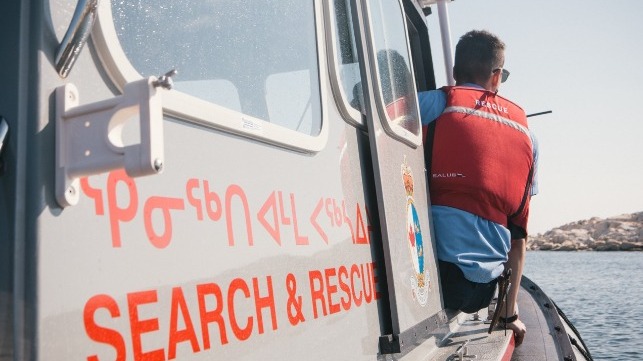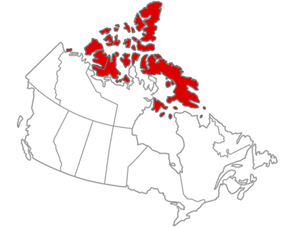The Arctic is much bigger than people realize.
Neither ships nor helicopters go very far very fast.
Refuelling sites can be very far between, and caches may not have been tested recently enough.
Weather can be harsh, preventing flight and causing more things to break.
It took six weeks to get two Griffons from Borden to Alert a few years ago, between weather delays, breakages (a windscreen and a tail rotor blade), and minor things that would not normally be of significance except where available seats and cargo space on commercial aircraft can be hard to come by (and sometimes only one or the other, ie a seat is available for a tech in three days but no cargo space for tools and parts for over a week more). It's a bit annoying to find, once the box labelled "Windscreen, Left-Hand" arrives and is opened, only to find that it contains a "Windscreen, Right-Hand", and it tales six days to get the right one to the tiny gravel strip in the middle of nowhere and then, once work begins, it turns out that the six tubes of PRC sealant required turn out to be not the large size but the small size (not enough), and then, when everything's finally finished, a possible hairline crack in a tail rotor blade is detected on next morning's walkaround.
Those two crews were lucky. There was a hangar, fuel, and a "hotel" with a telephone available.
Many/most places are just a short gravel strip with no facilities at all, and the nearest community can be several miles away. In another case in one of those locations (another windscreen that cracked just after take-off), the local Ranger patrol had to guard the machine against polar bear attacks until the weather improved enough. Once the repair had been made (a tarp had to be secured across the windscreen so that a Herman-Nelson heater could warm everything up for the PRC to cure for a day), it was still a few days until we could get fuel flown in from the other side of James Bay by a commercial Twin Otter, which required several trips that had to be worked in around higher priorities. Then there were more weather delays...
And both of these cases happened in summer. Winter is not so easy.
See
Rescue at the top of the world - Skies Mag and
Ordeal in the Arctic - Wikipedia for another tragic illustration of Arctic reality.





